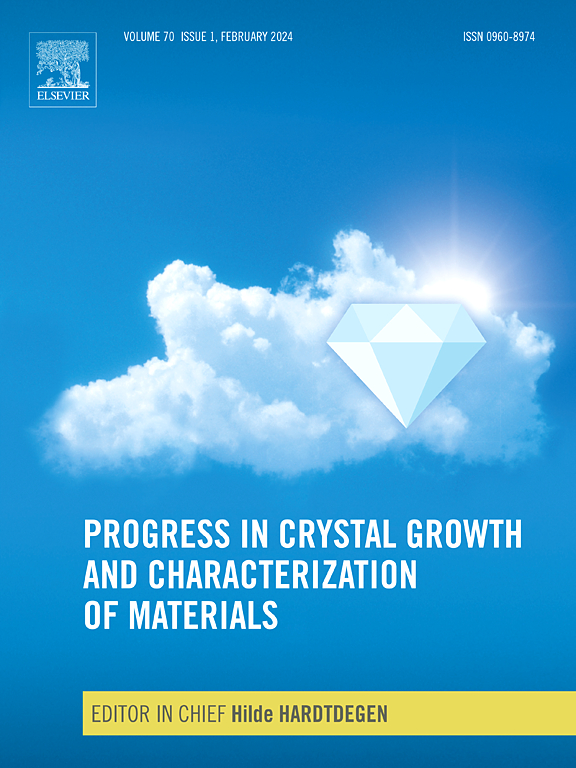三元化合物EuT2Pn2 (T= Cd, Zn)中杂质的化学压力Pn= P, As, Sb)
IF 1.9
2区 材料科学
Q1 CRYSTALLOGRAPHY
Progress in Crystal Growth and Characterization of Materials
Pub Date : 2025-04-26
DOI:10.1016/j.pcrysgrow.2025.100667
引用次数: 0
摘要
本文综述了三方金属间体系EuT2Pn2 (T= Cd, Zn;Pn= P, As, Sb;空间群P3¯m1,第164号)。讨论了在这些材料中观察到的物理性质,以及这些性质如何随生长条件的变化而变化。特别地,考虑了EuCd2As2的情况,其中可以获得来自许多来源的数据。在晶体生长实验过程中,材料可能存在的小污染很难验证,因为它通常低于标准表征技术的检测极限。结果表明,不同来源的样品在晶格参数上的变化超出了实验误差。结果表明,在Al2O3坩埚中以Sn为熔剂生长的反铁磁性样品的参数非常相似,而在SiO2坩埚中以盐为熔剂生长的样品的参数分布更广,大部分是铁磁性的。讨论了不同实验装置对样品中可能存在的杂质的影响。本文章由计算机程序翻译,如有差异,请以英文原文为准。
Chemical pressure due to impurities in trigonal compounds EuT2Pn2 (T= Cd, Zn; Pn= P, As, Sb)
This work provides a review of crystal growth, crystal structure, compositional details, magnetism, thermodynamic, and transport behavior in the family of the trigonal intermetallic systems Eu ( Cd, Zn; P, As, Sb; space group , No. 164). The physical properties observed in these materials, and how these change depending on the growth conditions are discussed. In particular, the case of EuCdAs is considered where data from many sources are available. The possible small contamination of the material during crystal growth experiments is hard to verify as it is often below the detection limit of the standard characterization techniques. It turns out that samples from different sources exhibit variations in the lattice parameters exceeding the experimental errors. The review of these parameters reveals that they are very similar for antiferromagnetic samples grown from Sn flux in AlO crucibles, while there is a wider spread for samples grown from salt flux grown in SiO2 ampules, which are mostly ferromagnetic. The influence of the different experimental setups with regard to possible impurities in the samples is discussed.
求助全文
通过发布文献求助,成功后即可免费获取论文全文。
去求助
来源期刊

Progress in Crystal Growth and Characterization of Materials
工程技术-材料科学:表征与测试
CiteScore
8.80
自引率
2.00%
发文量
10
审稿时长
1 day
期刊介绍:
Materials especially crystalline materials provide the foundation of our modern technologically driven world. The domination of materials is achieved through detailed scientific research.
Advances in the techniques of growing and assessing ever more perfect crystals of a wide range of materials lie at the roots of much of today''s advanced technology. The evolution and development of crystalline materials involves research by dedicated scientists in academia as well as industry involving a broad field of disciplines including biology, chemistry, physics, material sciences and engineering. Crucially important applications in information technology, photonics, energy storage and harvesting, environmental protection, medicine and food production require a deep understanding of and control of crystal growth. This can involve suitable growth methods and material characterization from the bulk down to the nano-scale.
 求助内容:
求助内容: 应助结果提醒方式:
应助结果提醒方式:


